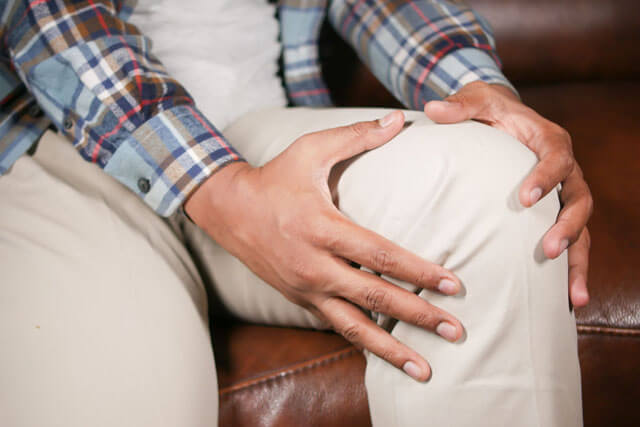Knee Pain

Knee Pain
Our knees take a lot of force. They support the weight of the body. They keep us upright and stable. They cushion us when we walk and run. So it's not unusual to feel knee pain at some time in our lives. Let's learn about knee pain, and what you can do about it.
Diagnosis
At Compass Pain and Spine we can diagnose the source of your knee pain with a comprehensive history, physical examination, and imaging (such as X-ray, CT scan, ultrasound, MRI) and/or lab tests.
Causes
Many conditions can cause knee pain:
- Bending or using the knee too much: this causes pain in the front of the knee that gets worse with running, climbing, or sitting for prolong periods of time
- Injuries: meniscal tears, ligament tears (ACL), fractures, bursitis, tendonitis, IT band syndrome
- Arthritis: refers to inflammation of a joint. The inflammation can affect structures in the joint, the synovium (lining of the joint), bones, cartilage, or supporting tissues. Common symptoms including pain, stiffness, and swelling of the joint. There are many causes of arthritis including age-related wear and tear, infections, automimmune conditions, and injuries.
- Pain after a total knee replacement: occurs in 20% of patients and can be chronic if not treated [EFORT Open Rev. 2018 Aug; 3(8): 461–470.] The prevalence of chronic pain after TKA is much higher than after total hip arthroplasty. [Beswick AD, Wylde V, Gooberman-Hill R, Blom A, Dieppe P, BMJ Open. 2012; 2(1):e000435.]
- Bursitis: happens with the fluid-filled sacs around the knee gets irritated and swollen.
- Meniscus tear: the rubbery cushion material (cartilage) between the thigh bone and leg bone is called the meniscus
- Muscle strain
- Joint infections
- Gout: a condition that causes crystals to form inside joints
Things that you can do yourself to help knee pain symptoms
- Put ice on the knee to reduce pain and swelling
- after an injury or a painful activity put an cold ice pack on the injured area every 1-2 hours, for 15 minutes each time, for the first few weeks after the injury
- to reduce swelling, sit or lie down and raise your leg above the level of your heart when you put ice on it
- Rest and avoid movements that worsen the pain
- try not to squat, kneel, or run
- avoid exercise machines, stair steppers and row machines
- walking or swim for exercise
- Take pain medicine such as Tylenol or Ibuprofen (NSAIDS)
Treatment
The correct treatment depends on the cause:
- Physical therapy, rest, ice, NSAIDs
- wearing knee brace or shoe insert
- exercises to strengthen and stretch the muscles that move your knee
- Steroid injection: Injections of steroids can reduce inflammation in the knee and may provide relief in some patients
- Hyaluronic acid injection (Gel one, Euflexxa, Synvisc One, etc.): a viscous fluid injected into the knee joint to help lubricate it. This therapy can provide relief that can last as long as six months and can be repeated
- PRP/Stem cell therapy can help reduce inflammation, promote healing and delay development of osteoarthritis because it contains high concentration of growth factors [Curr Rev Musculoskelet Med. 2018 Dec; 11(4): 583–592.] [Int J Mol Sci. 2021 May 23;22(11):5492. Doi: 10.3390/ijms22115492.]
- Genicular Radiofrequency ablation
- Nerve block and peripheral nerve stimulation
- Surgery: surgical options such as arthroscopic and joint replacement can be considered if conservative options have not helped